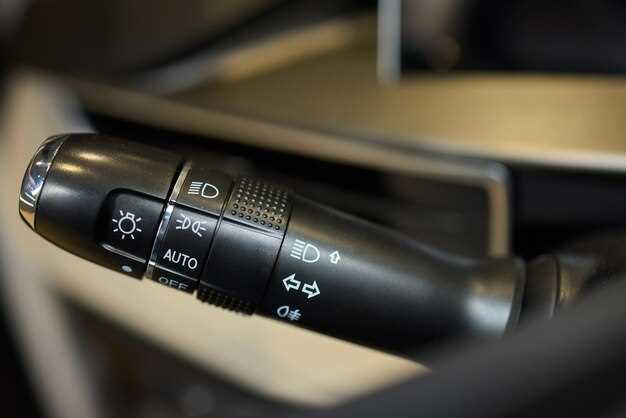Resolving Fiat Climate Control Malfunctions

The HVAC system in your Fiat plays a critical role in maintaining a comfortable driving environment, ensuring that you can enjoy your ride regardless of external weather conditions. However, like any complex system, it can experience a range of issues that hinder its performance. Understanding how to diagnose and fix these climate control issues is essential for all Fiat owners.
Common problems with the HVAC system may include insufficient heating or cooling, strange noises when the system is activated, or fluctuating temperatures within the cabin. These issues can arise from a variety of sources, such as a malfunctioning compressor, clogged filters, or even electrical faults. Identifying the root cause is the first step in effectively addressing these challenges.
In this article, we will explore troubleshooting techniques and common fixes for Fiat climate control issues, helping you restore your HVAC system to optimal working condition. Whether you’re a seasoned mechanic or a DIY enthusiast, understanding the intricacies of your Fiat’s climate control system will empower you to take control of your vehicle’s comfort features.
Troubleshooting Common Fiat HVAC Problems

When experiencing issues with the HVAC system in your Fiat, it’s essential to identify the specific problem to implement an effective solution. Common symptoms may include insufficient airflow, irregular temperature control, or strange noises when operating the system.
One frequent issue is inadequate airflow from the vents. This can result from a clogged cabin air filter, which obstructs the flow of air. Inspect and replace the cabin air filter if it’s dirty. Additionally, check for obstructions in the air ducts and ensure that the blower motor is functioning properly.
If the temperature inside the cabin is inconsistent, the problem may lie with the thermostat. A malfunctioning thermostat can prevent the HVAC system from properly regulating temperature. Test the thermostat’s functionality and replace it if necessary. Also, ensure that the coolant levels are adequate, as low coolant can affect heating performance.
Strange noises during operation could indicate issues with the blower motor or the HVAC fan. If you hear grinding or squealing sounds, inspect the components for wear and tear. Lubricate moving parts as needed or replace the blower motor to restore quiet operation.
Finally, if your Fiat HVAC system is blowing warm air when it’s set to cool, the refrigerant levels may be low. Conduct a refrigerant check and refill it if necessary. Additionally, investigate the AC compressor for proper function; a faulty compressor could hinder cooling efficiency.
Addressing these common issues step-by-step can enhance your Fiat’s HVAC performance, ensuring a comfortable driving experience regardless of the weather conditions.
Step-by-Step Guide to Replacing Fiat Climate Control Components

When dealing with HVAC issues in your Fiat, replacing faulty climate control components can restore functionality and comfort. Follow this detailed guide to correctly replace the essential parts of your Fiat’s climate control system.
- Gather Necessary Tools and Components
- Socket wrench set
- Screwdrivers (flat and Phillips)
- Pliers
- New climate control components (e.g., blower motor, resistor, control module)
- Safety gloves and goggles
- Disconnect the Battery
Before starting, always disconnect the negative terminal of the battery to prevent electrical shocks or short circuits.
- Remove the Dashboard Panels
Carefully remove the dashboard panels surrounding the climate control unit. Use the appropriate screwdrivers to avoid damaging any clips or screws.
- Access the Climate Control Unit
Once the panels are removed, locate the climate control unit. This may involve detaching additional components depending on your Fiat model.
- Disconnect Wiring Harnesses
Gently disconnect the wiring harnesses attached to the climate control unit. Take note of their positions for reinstallation.
- Remove the Old Component
Unscrew or unclip the faulty climate control component, whether it’s the blower motor, resistor, or control module. Ensure to take note of how it is positioned.
- Install the New Component
Position the new component in the same orientation as the old one. Secure it with screws or clips as necessary.
- Reconnect Wiring Harnesses
Once the new component is installed, reconnect all wiring harnesses carefully, ensuring they click into place securely.
- Reassemble Dashboard Panels
Reattach all previously removed dashboard panels, ensuring that all screws and clips are securely fastened.
- Reconnect the Battery
Reattach the negative battery terminal and ensure everything is properly connected.
- Test the Climate Control System
Start the engine and test the climate control system to ensure that the new components are functioning correctly. Check for proper airflow and temperature adjustments.
Following this step-by-step guide will help you efficiently replace the climate control components in your Fiat, ensuring your HVAC system works flawlessly.
Maintenance Tips for Optimal Fiat HVAC Performance
To ensure that your Fiat’s HVAC system operates efficiently, regular maintenance is essential. Start by checking the cabin air filter every 12,000 miles or annually. A clogged filter can reduce airflow and make the system work harder, leading to higher energy consumption and potential breakdowns.
Next, routinely inspect the refrigerant levels in the air conditioning system. Low refrigerant can indicate a leak, which not only impairs cooling performance but can also lead to further damage. If levels are low, have the system checked by a professional to avoid costly repairs.
Cleaning the exterior of the heat exchange components, such as the condenser and evaporator, can improve their efficiency. Debris and dirt can accumulate, hindering the system’s ability to exchange heat. Regularly removing grime will help maintain optimal performance.
Additionally, paying attention to the control settings and ensuring that the knobs and buttons function correctly is crucial. Malfunctions in the control system can lead to improper temperature regulation within the cabin. If you notice any inconsistencies, consider having the system diagnosed by a certified technician.
Finally, run the HVAC system periodically, even during cooler months, to keep it in good working condition. This practice prevents components from seizing and ensures that all parts operate smoothly when needed. By following these maintenance tips, you can enhance the performance and longevity of your Fiat’s HVAC system.



